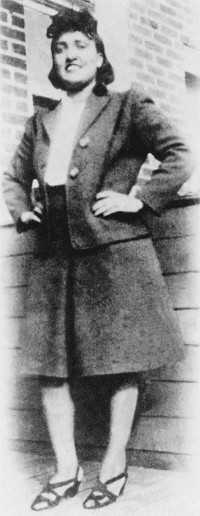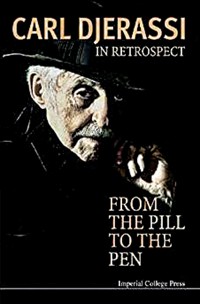Advertisement
Grab your lab coat. Let's get started
Welcome!
Welcome!
Create an account below to get 6 C&EN articles per month, receive newsletters and more - all free.
It seems this is your first time logging in online. Please enter the following information to continue.
As an ACS member you automatically get access to this site. All we need is few more details to create your reading experience.
Not you? Sign in with a different account.
Not you? Sign in with a different account.
ERROR 1
ERROR 1
ERROR 2
ERROR 2
ERROR 2
ERROR 2
ERROR 2
Password and Confirm password must match.
If you have an ACS member number, please enter it here so we can link this account to your membership. (optional)
ERROR 2
ACS values your privacy. By submitting your information, you are gaining access to C&EN and subscribing to our weekly newsletter. We use the information you provide to make your reading experience better, and we will never sell your data to third party members.
Biological Chemistry
Cells Of Controversy
The tragic and extraordinary story of the first human cells to be cultured outside the body
by Sarah Everts
May 17, 2010
| A version of this story appeared in
Volume 88, Issue 20

In March, Japanese scientists announced that they had discovered the first protein involved in thalidomide's tragic birth defects, which stunted the limbs in tens of thousands of human fetuses. The important discovery—which will certainly help unravel the drug's catastrophic side effects and perhaps prevent them in the future—was one of thousands of innovations that have relied on so-called HeLa cells, the workhorse of many cell biology labs. Yet few people know that HeLa cells were taken as biopsy samples in 1951 from a poor African American woman named Henrietta Lacks, who was dying of cervical cancer in Baltimore.
Named HeLa after the first two letters of Henrietta Lacks's names, the cells were given, without Lacks's permission, to biologists George Gey and Mary Kubicek at Johns Hopkins University, who coaxed the cells in the biopsy sample to grow outside the human body—the first time this had been achieved with human cells. In the following 60 years, HeLa cells have been shared with or sold to thousands of laboratories around the world. They have featured in more than 60,000 scientific papers and as cornerstones for the development of everything from a vaccine for polio to treatments for AIDS by acting as rudimentary human proxies. They've even been used in some of the first studies to examine the effect of radiation or outer space on human biochemistry.
In "The Immortal Life of Henrietta Lacks," author and journalist Rebecca Skloot tells the fascinating, sometimes bizarre, and entirely heart-wrenching story of Henrietta Lacks, her cells, and her surviving family. They first found out about the cells' usage and distribution some 20 years after Lacks's death. It is a family that continues to live at the poverty line, unable to afford some of the treatments Lacks's cells have bequeathed.

The book also describes in sparkling clarity the science Lacks's cells have since permitted. Readers learn about the scientists who did the initial research that allowed HeLa cells to become a valuable cell biology tool, and the meandering route to the multi-million-dollar industry that currently exists to produce and sell the cells. Readers follow Skloot's quest to gain the trust of Lacks's family, who became disgusted with anyone wanting more information about the HeLa cells, including scientists who continued to request blood samples from them for further genetic characterization of the cells. The book plunges deftly into scientific ethics, racism, and the consequences when these two important issues painfully collide.
In particular, Skloot describes strange twists of fate in the HeLa history, such as how it was a team of black scientists at the Tuskegee Institute, in Alabama, who first scaled up the production of HeLa cells so that they could be used to develop the polio vaccine by Jonas Salk in the early 1950s. In a ghastly coincidence, the African American scientists at Tuskegee were figuring out how to produce some 20,000 tubes of HeLa cells a week during the same time and at the same place that the infamous Tuskegee syphilis experiments were performed. In the profoundly unethical syphilis study, public health researchers recruited hundreds of black syphilis patients but denied them the curative penicillin treatment and information about the cure, which led to the deaths and infection of the patients' spouses and children.
INTENTIONALLY GIVEN
Rebecca Skloot has established the Henrietta Lacks Foundation, a nonprofit organization that will provide scholarships and health insurance to the descendants of Henrietta Lacks. Skloot is contributing a portion of the book's proceeds to the foundation: http://rebeccaskloot.com/book-special-features/henrietta-lacks-foundation.
The Tuskegee syphilis study was eventually a driving factor for the development of informed consent regulations for human subjects in clinical trials in the U.S. But HeLa cells also played a part in the National Institutes of Health's decision to require recipients of its funding to have their studies approved by ethical review boards. Skloot writes of Chester Southam, the chief of virology at Sloan-Kettering Institute of Cancer Research, who first injected prisoners with HeLa cells in 1954 to see whether the cancer cells would establish themselves in the subjects. In some patients they did. Southam continued these experiments for nearly a decade until three Jewish doctors, all-too aware of Nazi experimentation on human subjects, refused to inject the cells into patients and delivered their resignation letters to the press.
Skloot's presentation of her thorough research is an infinitely readable narrative whose chapters often jump around in time and switch between the Lacks family history and that of the many scientists who made famous and infamous developments with HeLa cells—all without seeming disjointed. Her writing is graceful and sensitive, but it does not soften the stark reality of Lacks's descendants, nor the tumultuous yet close relationship Skloot developed with the family over the decade that she researched the book. In particular, Skloot's relationship with Lacks's daughter Deborah is intertwined in the book: Deborah initially refused to return Skloot's phone calls for a year and once attacked Skloot physically, but the two eventually developed a friendship and went on research trips together.
Throughout this 369-page book the reader is often reminded that, today, trillions more of Lacks's cells exist in laboratories around the world than ever populated her body. These cells are routinely used to evaluate the efficacy of molecules developed by chemists, and many of the drugs and vaccines we take would not be possible without the cells of this mostly unknown woman. The book is an important acknowledgement of Henrietta Lacks's legacy, and it's an essential reminder that all human cells grown in labs across the world, HeLa or otherwise, came from individuals with fears, desires, and stories to tell.




Join the conversation
Contact the reporter
Submit a Letter to the Editor for publication
Engage with us on Twitter